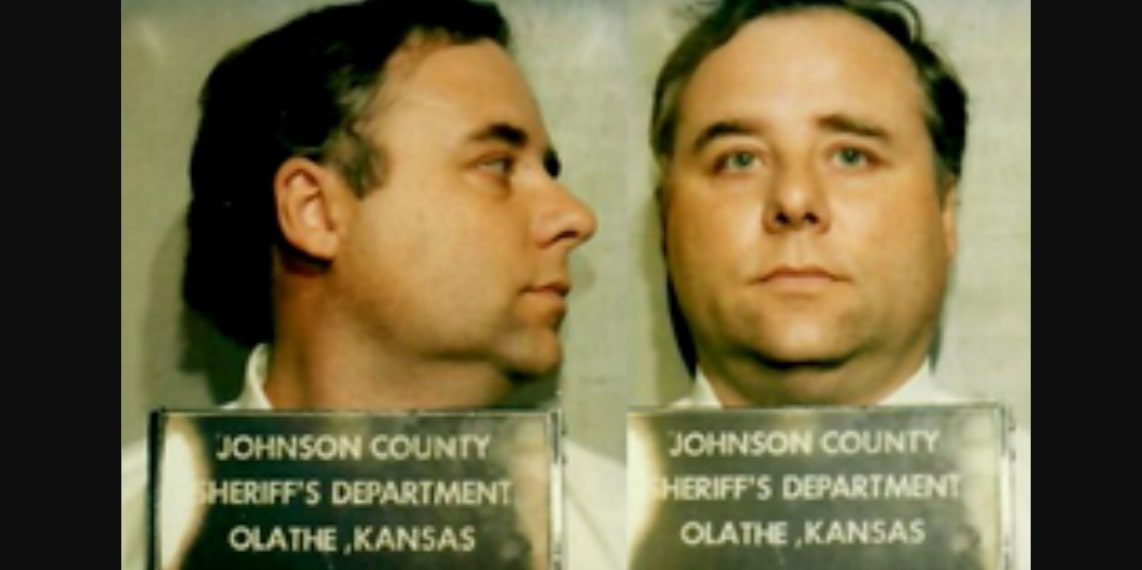Lifetime’s ‘Kidnapped by a Killer: The Heather Robinson Story’ tells the compelling tale of Heather Robinson, a young woman adopted by Mike and Jill Robinson. Believing her godfather, John Robinson, had simply helped arrange her adoption, Heather’s world is turned upside down when he’s arrested on suspicion of being a serial killer. As shocking revelations unfold, she begins to question everything she thought she knew about her past, especially the truth about her birth mother, Lisa Stasi. Directed by Lee Gabiana, the film explores deep themes of familial trust, betrayal, and the lasting consequences one person’s actions can have on an entire family. It raises unsettling yet powerful questions about loyalty, identity, and how blind trust can be shaken when long-hidden secrets come to light.
Kidnapped By a Killer is Based on the True Story of a Serial Killer From Kansas
Stories of family members deceiving loved ones about their true identities and serial killers hiding in plain sight are, surprisingly, not that rare. As strange as it may sound, writers Pamela Gray and Shawn Linden drew inspiration for the film from real events that came to light in 2000 when John Edward Robinson was arrested on suspicion of multiple murders. The film centers on Heather Robinson, whom he abducted as an infant and gave to his brother and sister-in-law, Don and Frieda Robinson, to raise as their own. Closely following the actual events, the movie stays largely faithful to the true story, with only a few names and minor details altered for dramatic purposes.

Lisa and Carl Stasi learned they were expecting a child and decided to get married in 1983. Their daughter, Tiffany Stasi, was born on September 3, 1984. However, tensions soon grew between the couple, and by December of that year, Lisa chose to leave with Tiffany and moved into Hope House, a shelter for homeless women in Kansas City, Missouri. At just 19 years old, she informed her family that she would be joining an Outreach Program and had met a man who introduced himself as John Osborne. She believed she would be helping other young mothers, and in return, she would receive housing and support to complete her GED.
John arranged for Lisa and her daughter to stay at the Rodeway Inn in Overland Park, Kansas. On January 8, 1985, she met with her sister-in-law, Kathy Klinginsmith, who later recalled that their conversation raised red flags and something felt off. The following day, John arrived at the house, and Lisa left with him, taking Tiffany. Just a few hours later, she called her mother-in-law, Betty Stasi, and mentioned something about being forced to sign blank documents. Before she could say more, she abruptly stopped and said, “Here they come…” before the call was disconnected. Betty later said Lisa sounded distressed and clearly not okay. That was the last time anyone saw or heard from her.
John Robinson Was Tied to the Murders of Eight Women
What had actually happened was that “John Osborne” was an alias used by John Edward Robinson, a man with a long criminal history that included financial fraud and embezzlement. Not long after Lisa Stasi’s disappearance, he approached his brother and sister-in-law, Don and Frieda Robinson, and claimed that a woman had died by suicide in a hotel room and that he was aware of it through his work. The couple, who had been struggling to adopt a child, were told that he could help make the process easier. He requested an “adoption fee” of $5,000 and provided paperwork that appeared legitimate. He then gave them Lisa’s baby, Tiffany Stasi, who was raised by Don and Frieda under the name Heather Robinson, in a loving and stable home.

Things appeared to be normal for the Robinson family until the year 2000, when police executed a search warrant at John’s property near La Cygne, Kansas. A woman had come forward accusing him of sexual assault and theft, which prompted a deeper investigation. By this time, he had already been a person of interest in multiple missing person cases in both Kansas and Missouri. During the search of his farm, authorities discovered the decomposed bodies of two women, later identified as Izabela Lewicka and Suzette Trouten, who had been reported missing in 1999 and 2000, respectively. John was immediately taken into custody. Shortly after, another search warrant was carried out at two storage units he had rented in Missouri. There, police recovered the remains of three more women: Beverly Bonner, Sheila Faith, and her daughter, Debbie Faith.
After John’s arrest, DNA testing revealed that Heather was Lisa’s daughter and that the adoption documents used in her placement had been forged. After a thorough investigation, the authorities concluded that Don and Frieda Robinson had no knowledge of John’s crimes. In 2002, the latter stood trial for the murders of Suzette Trouten, Izabela Lewicka, and Lisa Stasi. He was sentenced to two death sentences and one life sentence and was also convicted of interfering with the parental custody of Heather. In October 2003, he pleaded guilty to the murders of Paula Godfrey, Catherine Clampitt, Beverly Bonner, and Sheila and Debbie Faith, receiving additional life sentences for each. Although two of his life sentences were later overturned in 2015, John remains on death row to this day.
The Movie Brings Heather Robinson’s Life to the Forefront With Authenticity
In 2005, Nancy Robinson, John Robinson’s wife, filed for divorce. That same year, Heather Tiffany Robinson filed a civil lawsuit against Truman Medical Center and a social worker who had connected her biological mother with John. Heather was formally adopted into the Robinson family by Don and Frieda Robinson. In 2007, she settled another civil suit that barred John from profiting from the story through books or film rights. Heather also reconnected with her biological family and developed a close bond with her maternal grandmother, Patricia Sylvester. In 2019, she gave her first public interview, in which she reflected on what learning the truth meant to her, how it affected her life, and how she had found a path to healing.

Heather had plans to launch a podcast titled ‘The Lisa Stasi Effect,’ though it appears it has yet to come to fruition. According to reports, she is now married to Roberto Ramos and has children of her own. She has expressed hope that her mother’s remains might one day be found and laid to rest in the empty grave marked with a tombstone in Lisa Stasi’s memory. She is reportedly not in contact with her biological father and continues the journey of piecing her life back together. The film does a powerful job of portraying the complex emotions surrounding Heather’s story. It thoughtfully captures the emotional conflict Don and Frieda experienced, especially with the fear of possibly losing the girl they raised. The creative team behind the film remained committed to keeping the truth at the center of a narrative that was long overshadowed by deception and manipulation carried out by one man.
Read More: Who are Heather Robinson’s Real Adoptive Parents? Where Are They Now?


